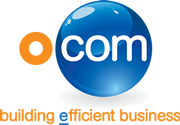How to and Why Use Cashbook
Why use a Cashbook?
Cashbook is actually a simple record in which business can record all payments made as well as income received. In the past, cashbooks were either hand-written books or spreadsheets on a computer. Today, due to technological advancements cashbook is now available as a computerized system.
Cashbook is used by business owners to keep track of the different cash receipts and payments. It helps in organizing the finances of the business and therefore all records are accurate. As we all know, accuracy is a crucial aspect for the success of any business or organization. Also, cashbook allows a well-planned financial record which makes it easier for business owners to know how they are doing financially.
Here are reasons why you should use a Cashbook:
- Cashbook is simple and easy to use. No accounting skills or experience is required.
- Cashbook allows working in multiple locations.
- Cashbook keeps you updated with your budget. You will know where you are going and where you should be.
- It is absolutely FREE.
How to use a Cashbook?
Keeping track of your financial activities is what cashbook aims. It can also make it easier for business owners to keep accurate records as well as manage their finances and assist them in assessing their financial situation. You can choose from different cashbook system just make sure that you start it correctly and maintain it regularly. By doing so, you do not only manage your finances but it can help you work out your cash flow needs for the coming month or year.
Steps to operate a cashbook:
- Decide on how many columns you think you will need. A 16-column book is best for hand-written system.
- Start each month on a new page or spreadsheet.
- Choose income and receipt columns that are most relevant to your business.
- If possible, use separate columns for expenses that is used frequently.
- Once you receive your bank statement, make sure to enter automatic payments or bank fees into your cashbook.
- At the end of the month, add all the columns and make sure that the total of the “income” columns is equivalent to the “receipts” while the total of the “expenditure” columns is equivalent to the “payments”.
- If you have other items, put it under the “sundry” column with a written description in the reference column for easier identification.
- Once you balance the cashbook, it will double-check your figures. The “expenditure” columns must add up to the “payments” column while the “income” columns must add up to the “receipts” column. Also, the opening balance of your bank statement, plus income, less expenditure or any unrepresented items should equal your closing statement balance as at that date.
How to budget with a cashbook?
Using cashbook will allow you keep track of receipts and payments. But how can you budget with a cashbook? First of all, cashbook tells you how much money has been paid in the bank. It can also show where your money came from, what cheques have you paid, to whom and for what, your current balance and lastly, the total amount for the month or the year for all your income and expenses.
